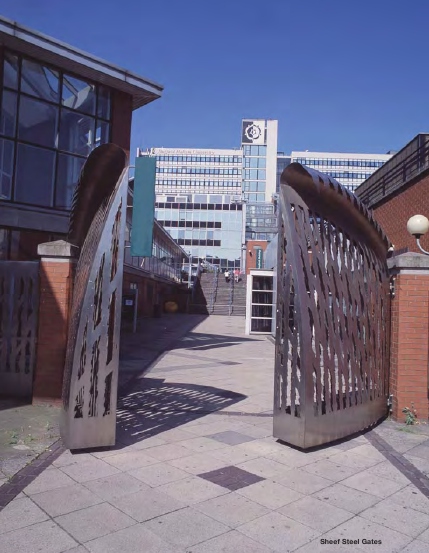Available Student and Research Projects
These are the projects currently being offered by the MMVL. If you wish to be supervised then please contact the listed supervisors directly for an interview. Note that we support projects at the undergraduate, ERASMUS, M.Sc. and Ph.D. levels.
The projects fall into the following categories:
See sections "See Also" and "External Links" for thesis marking sheet and sample reports from previous years.
Machine vision projects
Automatic Camera Calibration with Ruby
A camera calibration toolbox had been already implemented and integrated into our Vision Tool-Kit named Mimas. Currently the camera calibration requires some manual intervention as user input. The purpose of the project is to fully automate the camera calibration process. Please contact Kim Chuan Lim or Jan Wedekind for more details.
Skills required : Student with reasonable good c++/ruby programming.
See Also
External Links
Embedded Machine Vision System
The project requires the design and fabrication of a small embedded machine vision board comprising a CMOS camera chip and a micro-controller unit (ARM7/ARM9/Cortex/xScale) for on-board image processing. The work is in conjunction with a European project in reconfigurable robotics.
Supervisor: Fabio Caparrelli
Robotics projects
Robot formation using APF
| File:Netlogo.jpg multirobot-human formation with NetLogo 4.0.2 |
This work consists of the study of different types of artificial potential forces (APF) for formation generation and maintaining in multi-robot systems. Simulation study of different robot behaviors (robot aggregation, group migration and obstacle avoidance) for a team of robots in a 2D environment using NetLogo.
Supervisor: Lyuba Alboul, (Jacques Penders), Assistant: Joan Saez-Pons
See also
External Links
Inter-robot KIII communication
| File:Khepera3.png Khepera III model with Webots 5.0 |
File:Kh3.jpeg Khepera III robot |
This work consists of developing an algorithm for explicit inter-robot communication using IR/sonar proximity sensors. Software to be used: Webots (3D robot simulation software). The simulation will be tested on real Khepera III (small-size robots).
Supervisor: Lyuba Alboul, Alan Holloway, (Jacques Penders), Assistant: Joan Saez-Pons
External Links
Formation control of Khepera III robots
The project consists of implementing formation control on a group of 3 Khepera robots. Inputs for the control are the US and IR sensors mounted on the khepera III robots, the control consists of a set of attraction and repulsion forces. Supervisor: Lyuba Alboul, Alan Holloway, (Jacques Penders)
Wall following behaviours for mobile robots
Abstract: the project consists of implementing wall following behaviour on a Khepera III robot using US and/or IR sensors mounted on the robot. Additionally a map of the environment is produced or 2 other khepera follow the wall follower in a formation.
Supervisor: Lyuba Alboul, Alan Holloway, (Jacques Penders)
Design of a I2C sensor interface for Khepera robots using an embedded microcontroller
Abstract: The project consists of designing, building and testing a sensor interface to be mounted on a Khepera robot. The system will be based around an embedded microcontroller which will interface to the Khepera using the I2C interface.
Supervisors: Alan Holloway, (Jacques Penders) Assistant: Joan Saez-Pons
Design of miniature multi channel frequency counter for remote QCM sensing applications
Abstract: The project will involve research into a suitable method of measuring the frequency of an array of frequency based sensors. It is anticipated that either an embedded microcontroller or FPGA will be used. A prototype design should be made and suitable validation of the system performed.
Supervisors: Alan Holloway, A Nabok, (Jacques Penders)
Design of a microcontroller based Electronic nose for use on Khepera robots
Abstract: The project is based around the design of both a hardware and software interface for a small array of sensors which can be mounted on a Khepera robot. The project will involve some embedded microcontroller programming, electronic circuit design and PCB design/fabrication
Supervisor: Alan Holloway
Medical projects
Baby breathing monitor
The purpose of the project is to measure the breathing rate of babies without any physical contact.
- Solution 1: Using sensors - A proof of concept working version has already been done using a single sensor. The proposed project will explore the possibility of improving the accuracy and the robustness of the system.
- Solution 2 : Using a web camera based vision system to detect the breathing movement. A proof of concept working version has already been developed. The proposed project will explore the possibility of improving the accuracy and the robustness of the system.
Reference : Development of non-restrictive sensing system for sleeping person using fiber grating vision sensor (Journal paper)
Skill set that will be developed : Electronics, PIC micro-controller programming. Exposure to Linear algebra. MATLAB and/or C++ programing knowledge will be useful
Supervisors: Reza Saatchi and Arul Selvan
Medical Ultrasound Training Simulator
Using augmented virtual reality and haptic force feedback system to simulate the Ultrasound medical examination of a patient. An M.Sc. student has previously developed most of the simulator. The enhancements to be done to the existing project are related to acquire new data set(Medical Ultrasound images) to incorporate into the existing project.
Skill set that will be developed : Electronics and PIC micro-controller programming. Some prior programming experience is required. experience. Python programming
Supervisors: Reza Saatchi and Arul Selvan
Industrial robotics & automation projects
Precise Food Decoration Using a Robot-Controlled System
The project requires the design and construction of a mechanical rig to be attached to a robot platform and mounting a laser-optical displacement sensor. The aim is to use the sensor to keep the robot end-effector to a constant distance from a non-flat surface. The targeted application is in the food robotics industry, eg automatic decoration of confectionery foods (cakes!).
Supervisor: Fabio Caparrelli
